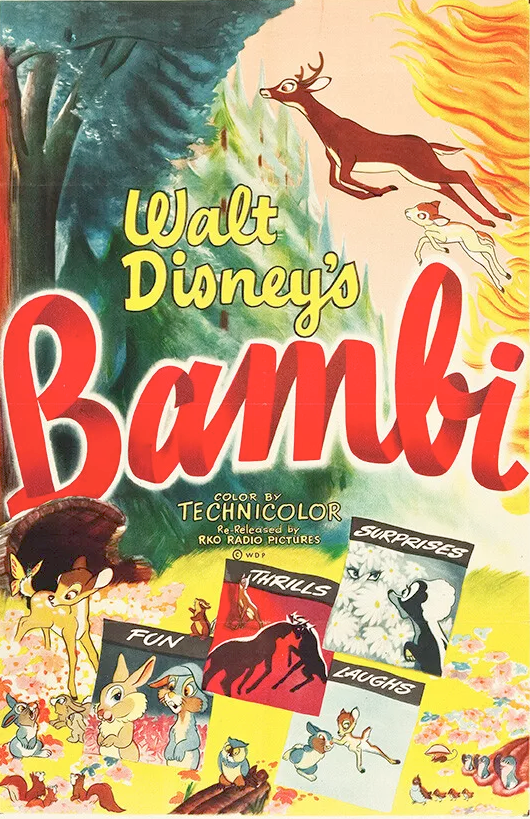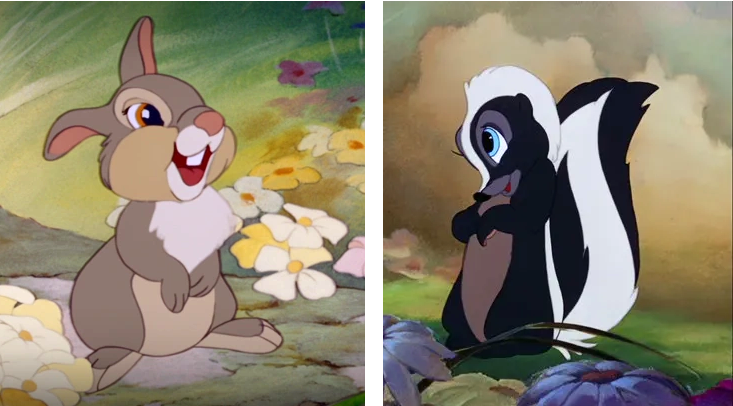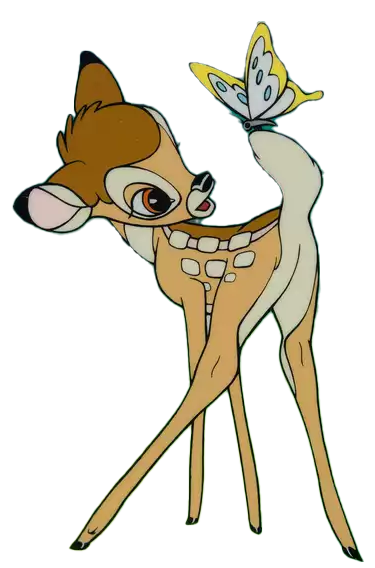
Movie goers in 1942 didn’t quite know what to think – or how to feel about — Walt Disney’s fifth full-length animated feature Bambi. Disney himself later described it as a “deer love story” and remarked, “During the war, people were in a different mood, and they didn’t quite go for things like Bambi.” The movie was released in war-damaged London, then had its U.S. premiere a few days later, August 13, 1942.
Ticket sales at its initial release were underwhelming. Contrast this fact with the re-release of Bambi in 1957. The audience response this time generated $2 million in almost pure profit for Disney. In 2011, the Library of Congress added Bambi to the National Film Registry to be preserved as a cultural, artistic, and historical treasure.
The source material is a book written in 1923 by Austro-Hungarian writer Felix Salten: Bambi, A Life in the Woods. The book was first released in German, then an English translation was published in 1928.
MGM filmmaker Sidney Franklin purchased the screen rights to the novel in 1933, hoping to make a live-action film with real animals. When this concept proved daunting, he encouraged Disney to make the film using his blend of drawing and animation.

Disney’s first animated feature film was Snow White and the Seven Dwarfs, which was extremely successful both at the box office and with critics. It premiered in 1937 and was followed in order by Pinocchio (1940); Fantasia (1940); The Reluctant Dragon (1941); Dumbo (1941); and Bambi (1942).
Working on Bambi were five of Disney’s “Nine Old Men” to include Milt Kahl, Frank Thomas, Eric Larson, Ollie Johnston and Marc Davis. The reference linked the nine with the same number of judges comprising the U.S. Supreme Court. Other members of the famous Disney nine were Leslie James Clark, Wolfgang (Woolie) Reitherman, Ward Kimball and John Mitchell Lounsbery. Working with them on the Disney productions were hundreds of fellow animators.
The storyline for Bambi the movie follows the young white-tailed deer (in the novel Bambi is a roebuck, not a white-tailed) as he grows up and matures with childhood friends Thumper (who appears in the novel as Friend Rabbit) and Flower (a shy skunk). Ultimately, Bambi takes a wife –another childhood friend — and has children of his own, becoming the “Prince of the Forest” like his father before him.
It may sound like a paradise, but beneath the beauty is the underlying hardship of survival in the forest, punctuated by the distant sound of the hunter’s gunshots. Animals die in the film, including Bambi’s mother, prompting writer Stephen King to comment it was the first “horror movie” he ever saw as a child.
For more about the “dark” Bambi, read “’Bambi’ Is Even Bleaker Than You Thought” in the New Yorker magazine online.


